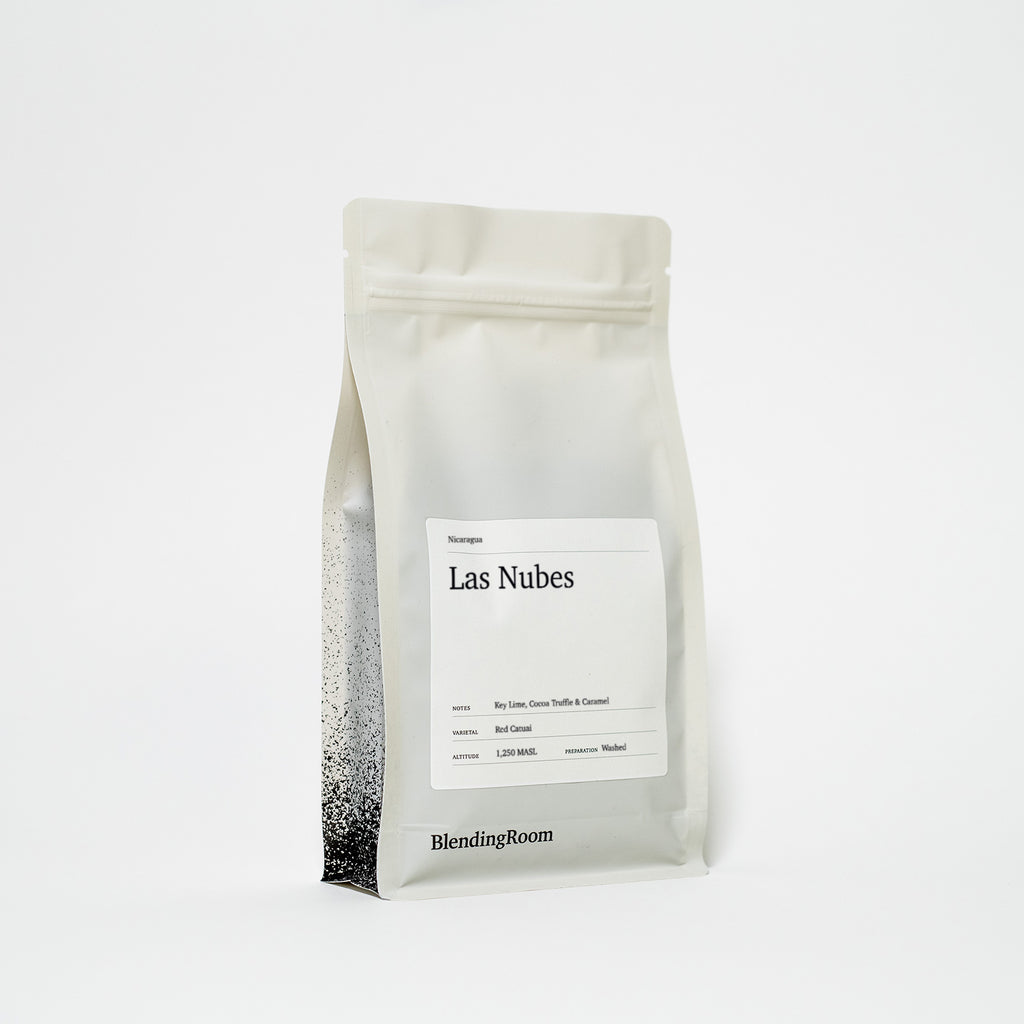
Las Nubes
Key Lime, Cocoa Truffle & Caramel
£11.00
- SCA Score 86
- Producer La Bendicion
- Altitude 1250
- Process Washed
- Varietal Red Catuai
- Location Nicaragua
Roaster's Notes
Roast colour: Extremely light.
Best brewed: Everything excluding espresso.
A zesty washed Nicaraguan coffee with notes of key lime, rich cocoa truffle, and smooth caramel. Bright, indulgent, and beautifully balanced.
Story
Xiomara del Carmen Marín Gradiz farms La Bendición in Nicaragua’s Las Nubes community at an average altitude of about 1,250 metres above sea level, the plot sitting at 13.763387° N, -86.507301° W. She bought the 3.7-hectare property ten years ago with money earned working abroad and, as a single mother, relies on it to support her children and wider family. The farm is shaded throughout, mainly by inga, banana plants and native forest species, giving roughly forty to fifty per cent cover. Cultivation is semi technified. Two soil applications of synthetic fertiliser are complemented by one of coffee pulp compost, and three foliar feeds are applied alongside low impact fungicides and insecticides. Coffee borer traps, shade regulation, pruning and de-leafing of the musaceae are routine. The main varieties are red Catuai, Caturra and Maracaturra, with a little Java also present. Harvest runs from January to April and yields around sixty six quintals of green coffee each year. Xiomara’s brother manages day to day work, joined by two extra hands for agronomic tasks and as many as fifteen pickers at harvest time.
There is no wet mill on the farm, so freshly picked cherries travel about two kilometres to Xiomara’s mother’s property. There they are floated, depulped and left to ferment for twenty to thirty six hours before washing, after which the parchment is taken to Cafetos de Segovia for drying on patios or African beds for ten to twelve days. The coffee is not stored on the farm; once dried it moves straight into the dry mill. Water for processing comes through hoses laid over roughly three kilometres, and the mill treats honey water and pulp so they can be converted into organic fertiliser. The farm’s integrated pest management relies on continuous monitoring, and whenever a problem appears, focal control measures are applied immediately.